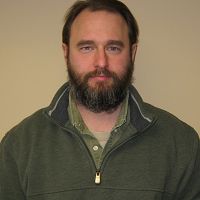Wilson et al., 2012
Quantifying and partitioning fine sediment loads in an intensively agricultural headwater system
Wilson, C.G., Papanicolaou, A.N., and Denn, K.D. (2012)
Journal of Soil and Sediments
-
IML, INVESTIGATOR
-
IML, INVESTIGATOR
Abstract
Purpose
This study was developed to improve understanding of the temporal variability of sediment delivery in a representative, intensively agricultural, headwater system of the U.S. Midwest by identifying the primary sediment source (i.e., uplands or channel banks) to the fine suspended sediment loads of three consecutive runoff events (with the third event being a flash flood) using naturally occurring radionuclides.
Materials and methods
Suspended sediment concentrations (C s) from discrete and continuous sampling techniques agreed well despite differences in operating principles. The total sediment flux (Q s) during each event was quantified over a 24-h period from the initiation of the rainfall using the following: (1) measured C s and flow discharges (Q w); (2) individual Q w–Q s relationships for each event (herein called individual event relationships); and (3) a cumulative Q w–Q s rating curve. The radionuclide tracers, beryllium-7 (7Be) and excess lead-210 (210Pbxs), were used with a simple two end-member mixing model to differentiate eroded upland surface soils and channel-derived sediments in the suspended loads of each event.
Results and discussion
Total load estimates from the measurement-based values and individual event relationships were similar, within 10 %, because they accounted for an observed non-linearity between C s and Q w (i.e., a clockwise hysteresis) during the events. The sediment rating curve assumed a linear relationship between C s and Q w and under-estimated the loads of the first two events while over-estimating the load of the flood event. The radionuclide partitioning quantified the proportion of eroded upland soils at 67 % for the first event, which was attributed to a “first flush” of readily available material from past events. For the subsequent and flood-event loads, 34 % and 21 % were respectively derived from the uplands, because less material was readily available for mobilization. Proportions are based on integrated samples for each event and are consistent with individual samples where available. During the flood event, stream bank mass failure was observed and bank erosion estimates from multiple methods compared favorably with the load results.
Conclusions
The radionuclide analysis showed decreasing proportions of eroded upland soils in the loads of the three successive events that was supported by observed clockwise hysteresis from source material exhaustion. Decreasing slopes observed in successive hysteresis plots for the events suggested that less material was readily available for mobilization following the first event flushing. The results of this study can assist watershed planners in identifying erosion-prone areas and determining optimal management strategies for sediment control.
Citation
Wilson, C.G., Papanicolaou, A.N., and Denn, K.D. (2012): Quantifying and partitioning fine sediment loads in an intensively agricultural headwater system. Journal of Soil and Sediments. DOI: 10.1007/s11368-012-0504-2
Explore Further


